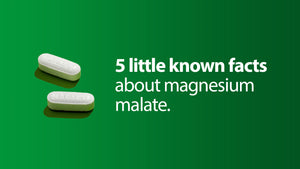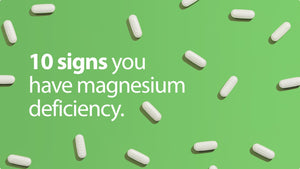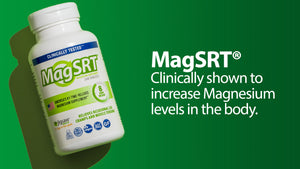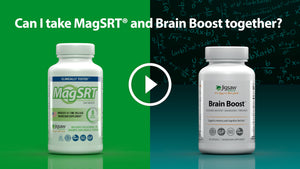World-renowned leader in integrative medicine, Dr. Andrew Weil, MD, calls them “magical” – substances that, as if by magic, accelerate what would be dreadfully slow processes in our bodies to speed-demon rates. Without them, our bodily functions would slow to a snail’s pace or stop completely...resulting in death.
What are these amazing, magical molecules – essential for life?
Enzymes.
You see, most necessary chemical reactions in the body would require extreme heat, pressure, acidity, alkilinity or an additional chemical to get them going. But the mild conditions in our bodies aren’t conducive to supporting these important chemical processes.
This is where the transformative power of enzymes comes in. Enzymes allow the necessary reactions to happen in our bodies at a speed that we can live with. As Dr. Weil explains in his book Spontaneous Healing, enzymes have very specific 3-dimensional shapes that stretch, twist, or bend the substances they’re working on when it’s bound to the enzyme.
By contorting the substance, enzymes strain or break the chemical bonds that need to be broken for a reaction to occur.1
Essential for Digestion
Scientist have identified over 3000 different enzymes in the human body, each of them specific to the biochemical reaction they help make happen. And there are actually thousands more yet to be identified.2
Necessary for just about every bodily function, they help transform phosphorus into bones, eliminate carbon dioxide from our lungs and concentrate iron in our blood.3 But perhaps the first thing that comes to mind when we hear the word “enzyme” is digestion.
In digestion, our body uses 22 different enzymes, classed into three groups according to the type of nutrient they break down. Proteases break down proteins. Carbohydrases break down carbohydrates. And lipases break down fats (lipids).4
When we don’t have enough of these digestive enzymes, we shortchange our body nutritionally. The food we eat does not get broken down into small enough chunks that our body can absorb and use.
Most Americans Don’t Have Enough
Ideally we produce the enzymes ourselves or get them from the food we eat. However, aging, genetics, health problems, diet, even medications can limit our own body’s enzyme production. But even many people in good health are short on enzymes and consequently lose out nutritionally.
Some enzymes we use to digest come from food. For example, the banana enzyme that converts banana starch into sugar as it ripens is the same kind of enzyme found in our saliva that starts the digestion of that same starch when we eat the banana. Both are amylases.5 And the amylases in the banana and in our saliva are both used to do the job of digesting the banana.
Fermented, probiotic-rich foods also contain enzymes produced by the bacteria, which is perhaps a key component of probiotics’ health benefits.
Common in our modern diets though, high temperatures from cooking and pasteurization as well as chemical preservatives destroy these food enzymes. When we eat lots of processed and cooked foods, we deprive our bodies of enzymes. Eating more raw, whole and fermented foods can bring more enzymes into our diet.6
However, naturopathic doctor Laurie Steelsmith, author of Natural Choices for Women’s Health, warns, “Raw foods have a lot of fiber which is good for most people but can also be irritating if the digestive system is inflamed.”7 And while enzymes from food can help, their action is small compared to the activity of the enzymes our body produces.8
A final factor lowering our enzyme count is that insidious problem – stress. “Good digestion takes place in a calm physiological state,” explains Dr. Steelsmith. “Reducing the stress in your life will also help increase your enzyme levels.”9
Counteract Stress And Chronic Illness With Digestive Enzymes
To ease poor digestion, Dr. Steelsmith recommends supplementing with digestive enzymes.
In addition to regular use, Dr. Steelsmith recommends having extra on hand when you’re worried about allergen exposure. “They are great to take when I’m a dinner guest,” points out Dr. Steelsmith, “and I don’t want to be nitpicking the host about what’s in the food.”
The only conditions Dr. Steelsmith advises against taking enzymes with is gastric ulcers or chronic gastritis since protease enzymes may further irritate ulcerated tissue.10
Coenzymes
Equally critical in thinking about enzyme supplementation is making sure you get adequate amounts of minerals that act as “coenzymes” – helpers in enzyme catalysis. Without these critical coenzyme nutrients, enzymes don’t work.
Magnesium, a star mineral in Jigsaw Health’s vitamin packs (Jigsaw Complete), and zinc are two of the most common digestive coenzymes. Unlike enzymes, these coenzymes get used up with each reaction.11
Finding Digestive Enzyme Supplements That Work
Jigsaw Health chose National Enzyme Company (NEC) as the best source for enzyme supplements. NEC has been manufacturing enzymes for over 75 years, with a heavy emphasis on research.
With the help of fungi, NEC produces broad-spectrum supplements that contain enzymes from all three groups of digestive enzymes. Unlike animal-derived enzyme supplements, these fungal enzymes don’t need an enteric coating to survive the low pH of the stomach, making them easier to digest and absorb.
NEC spokesperson, Tracy Lightfoot, points out, “NEC enzymes can work very well regardless of the diet and normally don’t need any special conditions in order to function.” However, Lightfoot advises taking enzyme supplements within 30 minutes of eating for best results.12
Cited Sources
- Andrew Weill, MD. Spontaneous Healing. New York, New York: Fawcett Columbine Books, 1995. p 73
- Tracey Lightfoot, personal correspondence. 6/20/08
- James F. Balch, MD. Prescription for Nutritional Healing. Garden City Park, New York: Avery Publishing Group Inc, 1990. p. 34.
- Tracey Lightfoot, personal correspondence. 6/20/08
- Elisabeth Garcia, Franco M. Lajolo (1988) “Starch Transformation During Banana Ripening: The Amylase and Glucosidase Behavior” Journal of Food Science 53 (4) , 1181–1186 doi:10.1111/j.1365-2621.1988.tb13557.x
- Tracey Lightfoot, personal correspondence. 6/20/08.
- Laurie Steelsmith, personal correspondence. 6/17/08.
- Tracey Lightfoot, personal correspondence. 6/20/08.
- Laurie Steelsmith. Natural Choices for Women’s Health. Three Rivers Press: New York, NY, 2005. p. 191.
- Laurie Steelsmith, personal correspondence. 12/11/07, 6/17/08.
- Earl L. Mindell, RPh, PhD. Bottom Line’s Prescription Alternatives. Stamford, CT: Bottom Line Books, 2003. p. 165.
- Tracey Lightfoot, personal correspondence. 6/20/08.
- Pat Sullivan. Wellness Piece by Piece. Albuquerque, NM: Health Press NA Inc, 2005. p. 136.




















